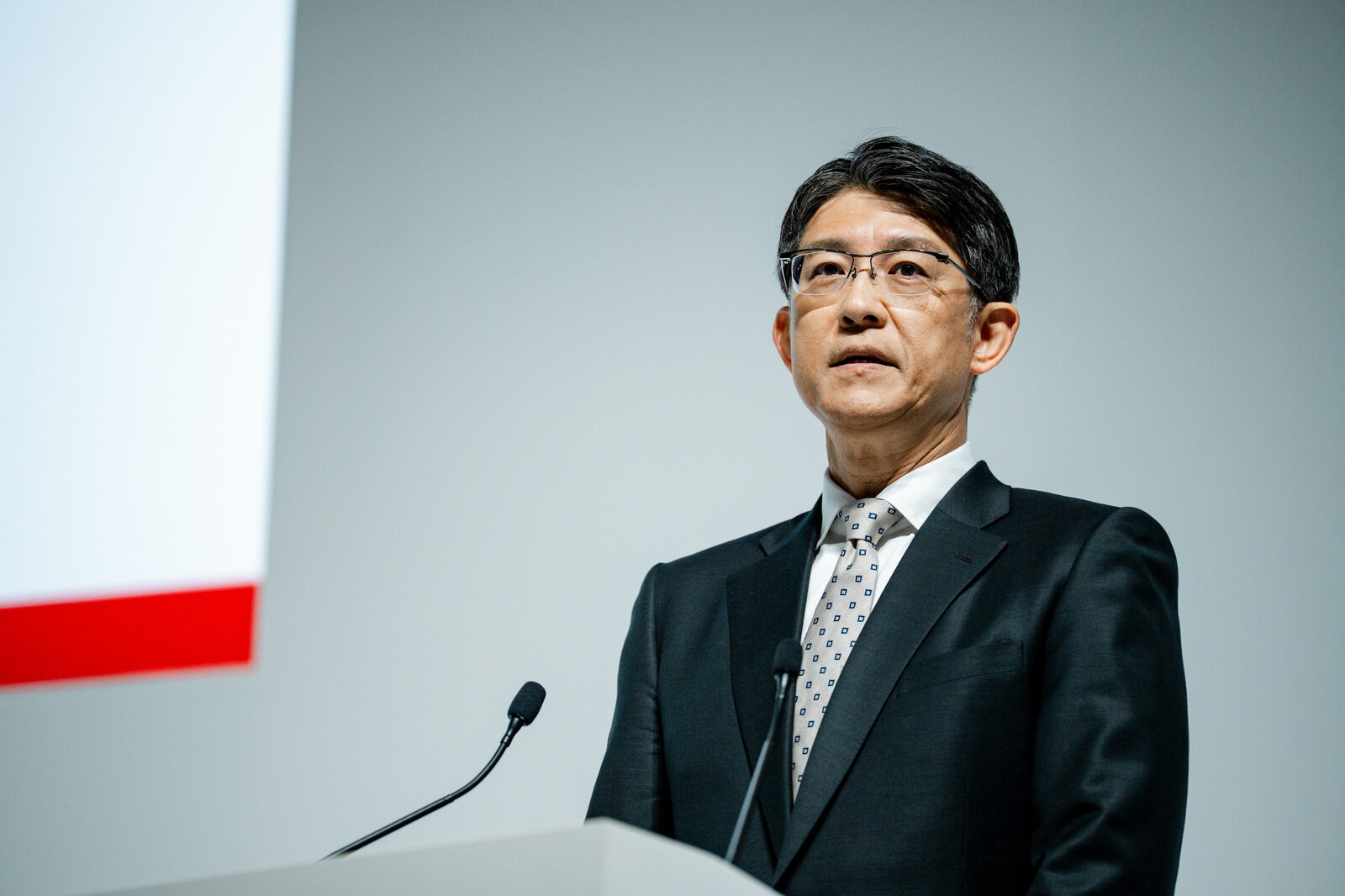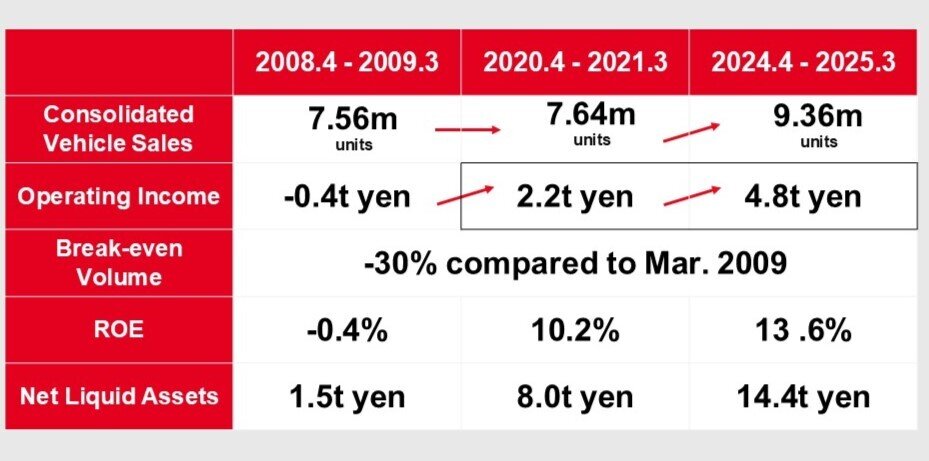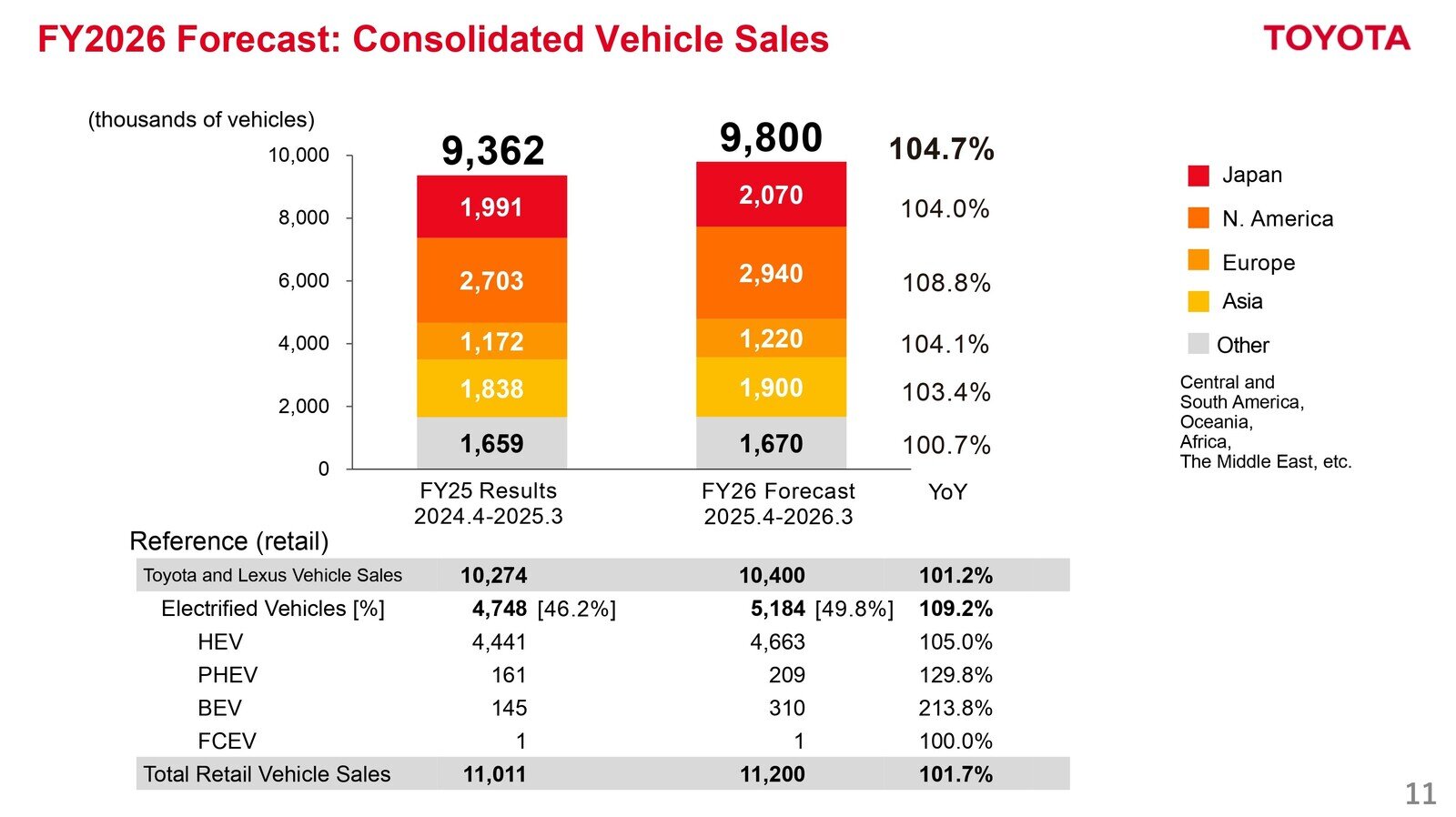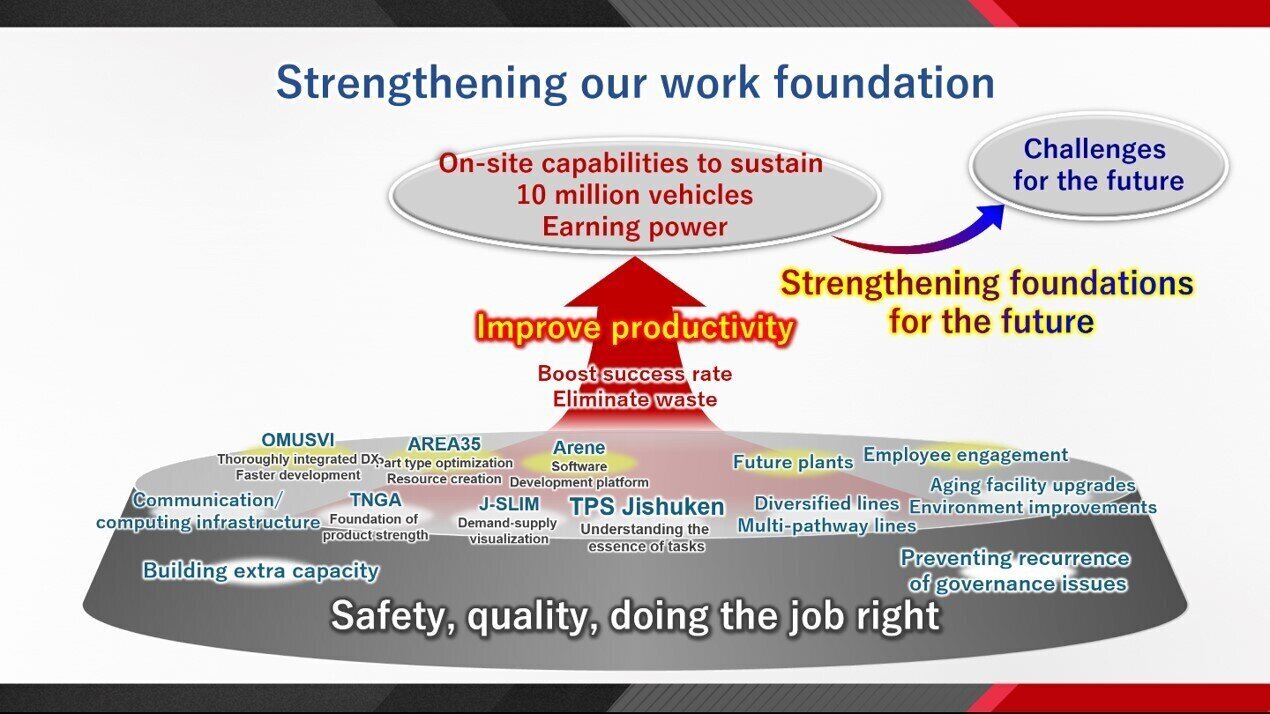
Despite facing U.S. tariffs, Toyota says it will not waver in sustaining domestic production at three million vehicles. How did the company's leaders respond to questions at the recent financial results briefing?
Will production move to America?
If the tariff policy remains in place over the long term, is there a possibility that Toyota will build new local plants?
Vice President Miyazaki
The U.S. also has rules for increasing local procurement within North America, through the United States-Mexico-Canada Agreement (USMCA)*.
*Trilateral trade agreement between the United States, Mexico, and Canada. Includes regulations to raise the percentage of auto parts originating in North America, with the aim of promoting local production in the region.
In light of this, we are also working to raise our levels of local procurement.
We also want to place production within each region from a BCP* perspective. To that end, we need to shift not only vehicles but also units. We have been working on this for some time.
*Business Continuity Plan. A plan for continuing/swiftly restoring operations in the event of an emergency (natural disaster, terrorism, system failure, etc.).
We are doing all this not on account of tariffs, but because these are things that we need to do. While we cannot foresee everything (including tariffs), we want to find a path through these uncertainties as best we can so that we can push that final button.
The role of domestic production
Despite the U.S. tariffs, do you remain firmly committed to producing three million vehicles in Japan?
President Sato

First, I would like to start by sharing our thoughts on domestic production.
We want to ensure that we never forget the significance of our domestic production and never waver in protecting it.
By safeguarding our supply chain and producing within the country, we earn foreign currency through exports. This is used for energy and other essential transactions in Japan.
From this perspective, we believe that maintaining domestic production is crucial for our monozukuri industry.
We intend to uphold our unwavering commitment to producing in Japan.
Adding to President Sato’s comments, Vice President Miyazaki provided more detail while touching on Toyota’s revenue structure.
Vice President Miyazaki
In the fiscal year to March 2021, the pandemic resulted in consolidated sales of 7.64 million vehicles, a drop of around 1.3 million from the previous year (8.95 million units in FY2020).
Despite these circumstances, we were able to generate 2.2 trillion yen in operating income.

And through improvement efforts undertaken since the pandemic, our marginal profit per vehicle is now roughly 1.6 times greater.

The same improvements have been incorporated into cars bound for the U.S. market. Therefore, given our current revenue structure and business structure, we believe that the impact of the tariffs is not cause for panic.
Of our three million vehicles produced in Japan, we export 500,000 to the United States. With many back orders, for the time being we consider it best to observe the course of events, including negotiations between the governments, without rushing to revise our domestic production structures.
In addition, since we cannot make cars on our own, over the medium- to long-term we must pursue joint efforts with our suppliers and dealers.
For now, we want to monitor the situation without making any rash changes within the revenue structure we have established.
As Sato just described, the auto industry has outsized importance in Japan. Automobiles exported overseas by various manufacturers, including Toyota with our three million-strong domestic production, earn the country some 20 trillion yen in foreign currency.
The auto industry’s 20 trillion yen of exports helps to offset the 24 trillion yen spent on importing resources and energy, and we want to continue fulfilling this role.
Efforts to make Toyota more competitive
Then, when asked what the next fiscal year held in store for Toyota, Vice President Miyazaki elaborated on the importance of producing three million vehicles in Japan as a source of earning power.
Vice President Miyazaki
It is very difficult to foresee what lies ahead this year. Amid this sense of uncertainty, I believe the most important thing is that we do not waver from our core mission of “producing happiness for all.”
In order to do that, we must maintain domestic production at three million vehicles. Or continue developing ever-better products to keep our overseas plants operating at full capacity.
This year will likely see us once again return to our starting point and focus on those fundamentals.
In terms of earning power, while we begin the year with an operating income forecast of 3.8 trillion yen, we hope to continue building on this as we proceed.
Given that this 3.8 trillion factors in the impact of exchange rates and tariffs, worth approximately 1 trillion, we still retain an earning power of 4.8 trillion yen.
We want to find ways to continue raising this figure further, and this will entail making products that satisfy the actual needs of customers.
Demand for hybrids remains strong. While we had originally hoped to be producing five million by 2026, I previously spoke about bringing that date forward as much as possible.
Since then, as part of strengthening our foundations, we have paused to reconfigure development and production to align with our actual needs, which resulted in hybrid production growing by 850,000 vehicles in the previous year. This fiscal year we forecast an increase of about 5% to around 4.7 million units.

Although we are on track with our original plan for 2026, we will keep striving to bring this forward and build up our earning power.
Similarly for PHEVs (plug-in hybrid vehicles) and various other types of units, we are working hard to reduce costs in the belief that, once we are able to produce larger quantities, earning power will follow.
To reiterate, we are focusing on what needs to be done now. As part of that, we want to keep working to add to the company’s earning power.
So, what specific steps is Toyota taking to maintain domestic production at three million vehicles? President Sato answered this question by emphasizing Toyota’s unwavering commitment and the importance of efforts to strengthen the company’s foundations.
President Sato
As we seek to maintain domestic production at three million vehicles, we believe strengthening our foundations is extremely important.
This strengthening of foundations is not a matter of investing in suppliers and dealers as a form of compensation, as it were, but rather working together to build extra capacity in order to boost productivity.

At present, our production operations are running at a high level, leaving the genba with no reserve capacity for making improvements or further innovations.
By creating extra capacity, we can raise productivity even higher. In working to strengthen our foundations, we want to create an environment where we can spend the necessary energy and effort to make that happen.
Rather than being financial compensation, this will raise productivity in the medium- to long-term and ultimately have the effect of reducing costs. As we proceed, it will also contribute to greater competitiveness. That is the mindset behind the efforts to strengthen our foundations.
If we are to protect domestic production—which we intend to do—I believe we must be dedicated to improving competitiveness and productivity.
Then, with the Q&A session drawing to a close, this question popped up:
“Recently, it feels like we are seeing fewer cars of the kind that match President Sato’s tastes—exciting, fun to drive. What are your thoughts in this regard?”
Compared to those before it, this question came slightly out of left field. How did President Sato handle this unexpected query?
Find out in our next article.

